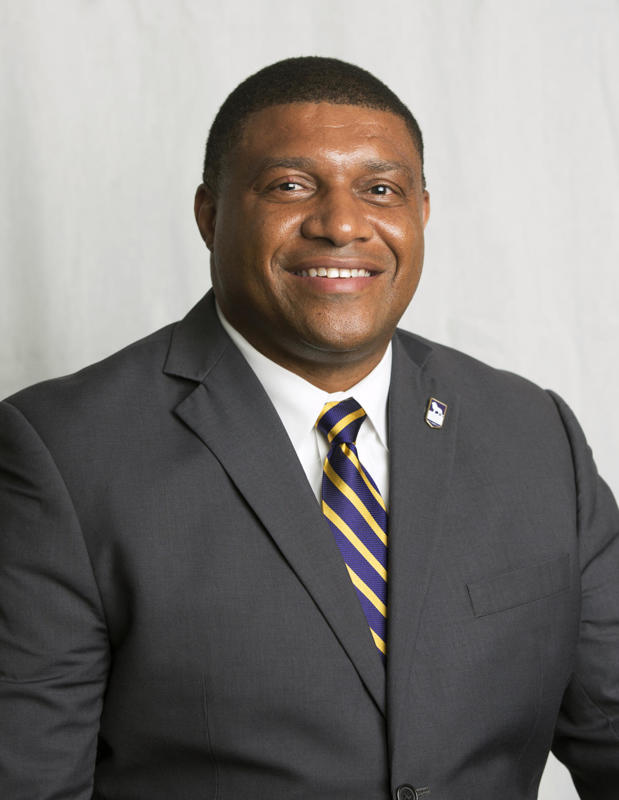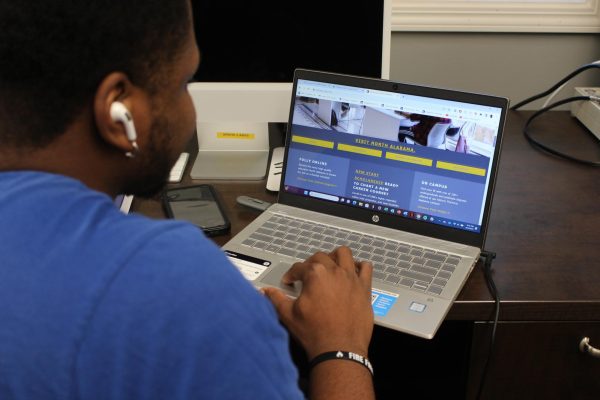Who is Dr.Ron Patterson?
February 16, 2023
Growing up in Corinth, Miss. as the son of two hardworking, loving parents who never went to college, Dr. Ron Patterson would never picture his life now as he looks out over the University of North Alabama’s campus from the window of his office on the second floor of the Guillot University Center.
Patterson began his journey at UNA in 2016, and in 2020 became the Vice President over Diversity, Equity and Inclusion. Growing up, his love for sports led him to dream that he would one day be a professional athlete. He even switched sports after sustaining an injury in high school. Although he did play at the collegiate level while receiving his associate’s degree, his plans shifted as he continued to grow in his path through higher education.
He was the first and only member of his family to graduate from college. He is the oldest in his family and has two younger sisters. Being raised as the oldest child, he is a natural-born leader. He says his role models are his parents. Being a first generation college student helps him relate to the students he works with. He started his career in higher education as an admissions counselor before ending up working directly with DEI.
“Earning a bachelors, masters and/or doctoral degree somewhat gives persons of color a greater opportunity to improve their economic wealth and health,” said Patterson.
As VP over DEI, Patterson has played a huge role in planning for this year’s Black History Month. This year, UNA will feature more events for Black History Month than ever before with 19 total. Several events such as Beta Alpha Psi’s Read Across America Book Drive and Hallowed Grounds will take place all month.
When asked what Black History Month meant to him, Patterson responded, “everything.”
“We have a duty, honor and obligation to always honor our cultural heritage and those who came before us and pave the way for the rights, civility, racial and social injustice freedoms we celebrate today,” Patterson said.
Throughout his time at UNA, there are multiple developments that have been made to increase diversity on campus that Patterson is proud of, including the addition of the Mitchell West center for social inclusion. One of the proudest moments for him was having the Commons Building named as the Wendell W. Gunn University Commons and having Wendell Gunn, the first black student to ever attend UNA, admitted to the university board of trustees.
In 2018 the President’s Diversity Faculty Fellowship began and the University launched and began requiring employees to undergo training in diversity, equity and inclusion. In 2020, the “A More Inclusive Era” marker was erected outside of Cramer Way, formerly known as Bibb Graves Hall.
Changes have been made under Patterson’s administration that increase education in diversity within the curriculum at UNA, including the incorporation of the One Book program into First Year Experience courses. A diversity course has also been developed and incorporated into the general education program.
Overall, he believes that having diversity, equity and inclusion incorporated into every aspect of life and learning at UNA is essential to molding students who will go out into the workforce as civil individuals. He takes it upon his shoulders to make campus an environment that reflects these values.
Patterson credits Rosa Parks as being his pick for the most influential figure in Black history, for if she had not said “no,” the door would not have been opened for the work done by heroes such as Martin Luther King Jr. and Malcolm X.
“Without Rosa, there is no Civil Rights Movement,” Patterson said.
As DEI continues to thrive, Patterson still believes there is work to be done and that inequalities still exist for people of color, but wishes for diversity to be embraced in all its many forms, not just racial.
“The economic divide is ever increasing for African Americans and all persons of color,” Patterson said.
He believes it is important for students to know that he does and sees everything through a lens of DEI. His vision going forward is to turn UNA into a more welcoming community for people from all walks of life. He proudly boasts that UNA is more diverse than the county in which it resides and hopes the spirit of inclusion shown on campus will shine a light on the community.
When asked what message he has for UNA students this Black History Month, he stated:
“Always recognize that everyone has their own unique lived experiences and that UNA is a conduit for everyone to explore our values and beliefs and learn as much as we can about each other, which will form our global lens about the world in which we live.”











